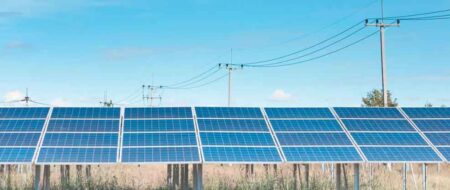Pakistan economy: Continuity or change
Policy Perspectives, Vlm 1, No.1
The present paper discusses three related topics. First, it carries a brief review of the existing development policy. Second, the areas where the present policy is inadequate. Third, the ways are suggested to overcome these deficiencies in the light of our own development experience in the past 40 years or so, and keeping in view the evolving academic consensus.
In the process, a sketch of writer’s own thinking on how best a fertile development policy should simultaneously pursue high rates of economic growth, macroeconomic stability, distributive equity, and poverty reduction is also presented.
The Existing Development Policy
The existent economic strategy has focused almost without exception on restoring macroeconomic stability and sustaining it to infuse confidence about the economy’s long-run financial viability. This is intended to lower the inflation rate, build up foreign exchange reserves, reduce the domestic and external debt, cut down the budgetary deficit, and decrease the imbalance in the balance of payments.
Central to the economic strategy is, however, a reduction of the domestic and external debt to a sustainable level, on a priority basis, by regulating the twin deficits. Raising the growth rate of GDP takes a back seat in this economic regime.
The reason for this neglect is the anticipation that it will take care of itself once the budgetary and current account deficits are back on an even keel. A government report states: “There exists a strong negative relationship between fiscal deficit and economic growth”. In this scenario, poverty comes down once economic growth revives thanks to a lowering of the twin deficits and the implementation of a series of direct poverty alleviation measures. Although not stated thus, it follows as a logical corollary that employment will also eventually increase. Unfortunately, these great expectations are unwarranted.
For, in all stabilization programs a let-up in the growth rate, an addition to the unemployment rate, and mounting poverty are accepted as the necessary correctives of the economic “distortions” caused by financial profligacy. For instance, in Europe, economic growth and employment were deliberately sacrificed in the 1970’s to achieve stabilization. Pakistan’s case is no different. As intended, the budget deficits has come down; and the current account deficit has turned into a surplus of 2.6 per cent of GDP, for the first time in Pakistan’s history.
The inflation rate averaged at only 3.5 per cent in 2001-02, which too is the lowest level in the last 32 years or so. Even more important, the rapid upsurge in domestic and external debts has been reversed: the domestic debt declined from 51 per cent of GDP in 1998-99 to 47 per cent of GDP in 2001-02, and the external debt climbed down from 62 to 59 per cent of GDP during the same period.
This may not look too impressive. But because debt increases at a compound rate, even seemingly small achievements here must be applauded. To cap it all, foreign exchange reserves have soared to a little over 10 billion US dollars, well beyond what even an optimist could expect.
The stock exchanges are booming, having crossed the 2000 psychological barrier; remittances have been flowing in; and it is now confidently held that they may reach the record level of $4 billion in 2003. Encouraged by these episodes of success, the government aims to give permanence to the still existing strategy.
As a step in this direction, the government has, quite sensibly, created a Debt Office to watch the debt situation and suggest ways and means to improve it as an ongoing process. Arrangements are being made to pay off the most expensive debt as soon as possible.
Some Shortcomings
Within the limited sphere of its own choice, the government’s is indeed a convincing performance, and it deserves some credit for it. But the time is not yet to bathe in the warm glow of self-congratulation. And it would be absurd to claim that, following present policies, Pakistan would soon join the league of middle-income countries. The absurdity of such a statement should be transparent.
For, with an average growth rate of per capita income of only 1.08 per cent during 1998-02, it will take 55.6 years just to double it, and 95.6 years to reach a point of about $2000, which is now the average income for the middle-income countries. As if to foreclose future growth revival, the process of structural transformation has practically stalled in Pakistan.
While the agriculture’s share in GDP has declined adequately to a little over 24 per cent, that of manufacturing is still only about 18 per cent, which is way below the low-income countries’ average of 33 per cent. The investment rate has fallen to an all-time low and so has the efficiency of investment, measured by the capital-output ratio. Even worse, unemployment rate is now close to a socially disruptive 8 per cent, and the share of labor income in total GDP has fallen.
The distance between the rich and the poor is now wider than ever, and poverty has risen. These “records” too are unprecedented in Pakistan’s history. Indeed, the return of poverty in Pakistan, with a vengeance, is a rare phenomenon in the annals of economic development.
All this suggests that the chalice of economic prosperity is now more distant from our grasp than ever. Thus, rather than singing paeans of great success, the government has better accepted that there is long struggle before it in the pursuit of economic glory.
The present development – or rather non-development – strategy must be changed to attain financial solvency as an integral part of a far-reaching effort at economic and human development.
The Way Out
My reasons for a radical change of course are the following. First, a successful development policy does not consist of just reversing past mistakes. To put the same point a little dramatically, while a cow can be turned into mincemeat, it cannot be recreated by just turning the mincemeat machine in the reverse! Nearer to our theme, if the country was reduced to rags from riches by borrowing recklessly, the answer is not just to pay off all the debt before all else in the hope that this act of supreme self-abnegation will, all by itself, transform rags into riches.
It is simply wrong to assert that since, mounting debt burden was the single-most cause of the winter of economic discontent, dismounting it on an urgent basis would be the surest way to usher in the spring of prosperity. The way out of our current misery is to pay off debt only as part of a wide-ranging effort to increase economic prosperity and human well being.
In other words, single-minded debt reduction is, by itself, not (repeat not) an economically sensible strategy, even though a lessening of external indebtedness must be, as it has always been, an integral part of all development plans. Thus, for instance, Pakistan’s first perspective plan aimed to abridge indebtedness to zero in 20 years, while accomplishing a growth rate of 7.2 per cent, and raising the investment and the saving rates to 18 per cent and 22 per cent of the GNP respectively. The fact that these targets were not achieved bespeaks a lack of political will, rather than a failure of the economic strategy. We need to go, on a similar venture, where we have gone before.
It is interesting to note that the basic viability assumptions of the perspective plan are almost identical to those used by the Debt Reduction Strategy of the present government-namely, a capital-output ratio of 2.1 and a marginal saving rate of 25 per cent! This suggests that the growth potential of the current strategy has been deliberately under-exploited.
Second, economic development is essentially a plurality in nature. In other words, a focal concentration on just one element of development policy, hoping that others can be taken up later is wrong-headed. To insist that high rates of economic growth will flow from the current regime of macroeconomic stability is asking for the moon. Indeed, there is no historical evidence to rest such a claim on. The opposite sequence is, however, nearer the truth: it is that, annual rates of growth of per capita income in excess of 3 per cent, if properly managed, have been associated with macroeconomic stability and lower poverty.
This sequence holds as a general rule each time that such high rates of growth of per capita income have been sustained for decades. On the other hand, the failure of current economic strategy to reduce poverty too has followed a set historical pattern. It happens whenever growth rate is stifled as a matter of policy in the single-minded pursuit of macroeconomic stability.
Third, economic and human development must be managed efficiently and equitably. This job cannot be left to the markets alone. There is a broad enough academic consensus that, to cite Joseph Stiglitz, market fundamentalism is both bad economics and bad politics; and that there is no such thing as a minimal government.
Amartya Sen points out that markets succeed only when public authority takes simultaneous steps to expand social opportunities. The market outcomes are themselves heavily influenced by the quality of public policy to create efficient non-market institutions. If a government is corrupt or inefficient, then it should be made reasonably honest and operationally efficient.
Efficiency does not come about by the simple act of the government removing itself from the scene. And yet a minimal government is what Pakistan now has. Indeed, in the mad rush to attain fiscal solvency it is set to become soon literally Lilliputian, and ineffective.
The fact is that it is by crowding out the government from the economic sphere that fiscal deficit has been reduced in Pakistan. Thus, the consolidated tax revenue at 12.6 per cent of GDP was lower than that even in 1998-99(13.2 per cent), notwithstanding the central government’s heroic efforts to raise tax proceeds. At the same time, the government expenditure has been cut down to 21.6 per cent of GDP, which is well below the UNDP’s minimum level of 30 per cent for a well-functioning government.
The hope has been that the private sector will take up the slack, but it remains unfulfilled. While public investment has declined to 4.7 per cent in 2001-02, the private investment has also fallen to 7.6 per cent. The fact is that a falling public investment has tended to crowd out, rather than crowd in, private investment.
This is an historical truth, the validity of which cannot be denied either in the developed, or the developing countries. To the assertion that public intervention tends to encourage rent-seeking behavior, the answer is that this happens in the private sector at least as much, if not the more so.
The fact of the matter is that a government must perform its development role, whose importance only grows as a country moves to higher stages of economic and human development. It is, therefore, no accident that public expenditure in the developed countries is twice as high as in the developing countries.
The Predicament
Finally, here lies the all- important question: Where do we go from here? The central thrust of a far-reaching development policy should be to achieve and sustain high rates of economic and human development. It is widely understood now that the two types of development are both statistically and economically interrelated.
They reinforce each other and should be attained together. It would, therefore, be a fruitless exercise to try to reduce poverty by a mere provisioning of social expenditures, when in the pursuit of macroeconomic stability the growth rate of GDP is reduced.
Similarly, human development may not occur if education and health and other social expenditures are neglected or inadequately provided for. The focus of future development policy must, therefore, be to achieve high enough rates of economic growth, while also raising significantly the public expenditures on education and health, which despite the rhetoric have remained, in Pakistan, around 2 and 0.7 per cent, respectively.
Central to success on both counts is that per capita income doubles within a period of 12 to 18 years, which would require increasing it to 6 in the former case and to 4 per cent in the latter case. An early doubling of per capita income is absolutely vital to reduce poverty significantly and maintain macroeconomic stability.
The former is the miracle rate which East Asian countries sustained for over three decades. Now, China has, before our eyes, broken even this record by doubling per capita income in just 5 to 6 years.
The modern advances in science and technology have made such high growth rates possible. However, even a somewhat slower growth rate of 4.8 per cent per annum would increase per capita income by 160 per cent in only 20 years. Perhaps, for the faint-hearts in Pakistan this should be a more realistic scenario. This is only one per cent plus higher than what the government itself plans to do in the next five years. Yet the aim should still be to move to the 6 per cent target in the next 10 years, especially as demographic transition gains further momentum.
Achieving these growth targets is difficult, but there is no cheap way out of the current development despondency. Success on this score would, however, take devising a very different strategy from both the one implemented by the government so far and that which it envisages for the next five years. Both of these should be completely reoriented, if not altogether discarded.
(a) The government should rest its remarkable success in reducing external debt, attaining a current account surplus, and building up foreign-exchange reserves on surer foundations. So far, the dramatic improvement in the current account owes primarily to a reduction in the growth rate of imports rather than to an increase in exports, which, with all the sound and frenzy still remains below the $10 billion mark.
Going well beyond this mark would necessitate expanding the export base and developing new exportable items that are allowed duty-free entry into the OECD markets. Our heavy concentration on agriculture-based exports (cotton textile exports still constitute more than 60 per cent of total exports) has made the export sector a hostage to the vagaries of agriculture.
To make it worse, these exports also invite high tariff and non-tariff barriers the world over. Following international trends, we must quickly move to the exports of non-resource-based items. Doing this would take knowledge-creating import-substitution on a selective basis.
Yet another important point is that foreign investment be invited in the large scale and heavy industries where its pay-off in terms of the transfer of technology would be the biggest. Lastly, the remittances, though most welcome, are essentially a kind of transitory income, which has come and gone before. The government should earmark this income to pay off the most expensive debt, as seems to be its intention. But a part of it should also be used to build up foreign-exchange reserves further, notwithstanding the problems they create for the monetary authority.
(b) To be able to reduce poverty and the unemployment rate, both of which have increased to unsustainable levels, the government will have to settle for a somewhat bigger fiscal deficit to give a greater role to the government, if the tax revenues do not rise enough.
The reduction in the fiscal deficit (to the target of 3 per cent, envisaged by the government) may now be secured from a rising GDP, by providing that tax revenue rises at a higher rate still. Yet another aspect of the government’s tax effort is that it has made the tax structure markedly regressive. True, this may be unavoidable when unrealistic tax collection targets must be achieved in a rush; yet, remedial action is required to alleviate the tax burden on the poor and/or alleviate it by higher government expenditure on social security.
(c) Inflation: To put down the inflation rate to an artificially low level as one of the central elements of the existing economic strategy may please Milton Friedman but it does little else, as the OECD countries are now discovering to their dismay.
In Pakistan, as elsewhere, it has directly contributed to raising the unemployment rate. This does not mean that we let inflation rate rise beyond the target of 5 per cent; it is rather a matter of keeping in view the inevitable trade-off between the monetary and the real variables. However, with efficient monetary management, a higher growth rate of GDP should itself lower the inflation rate, as the East Asian experience has shown.
(d) Drivers of growth: The government’s identification of the “four major drivers of growth”-namely, agriculture, small and medium enterprises, oil and gas sectors, and information technology – needs to be recast completely. The major driver of growth has historically been the large-scale manufacturing sector rising faster than the small-scale manufacturing and agriculture.
This is the universally valid process of structural transformation. Without accelerating it, high growth rate of GDP cannot be sustained for long. One of the main factors responsible for slowing down the engine of growth in Pakistan since 1988-89 is that the large-scale manufacturing has grown at a slower rate than small-scale manufacturing.
This phenomenon is known as production fragmentation, which must be avoided like plague. As for giving priority to agriculture, this too is based on a misunderstanding of actual past events. True, raising agriculture’s growth rate is absolutely vital to achieve high rates of GDP growth and reduce rural poverty. Its contributory role in economic development should be duly emphasized and steps taken to make it science-based rather than just resource-based.
Yet, the fact remains that agricultural development can be sustained only if manufacturing activity increase faster still. The two sectors are linked together in a dynamic relationship both in the labour market and the goods market. But, by the Engle’s Law, the manufacturing activity has always provided the main stimulus in all episodes of high and sustained growth, no matter how fast agriculture grows. When this does not happen urban unemployment rises. The identification of oil and gas exploration as a major driver of growth is, to put it rather mildly, unwise.
The World Bank Report (2000) points out: “Investment in natural resources is often enclave investment. It brings needed capital…but offers few other benefits-new technologies, new markets, and increased human capital-that are usually associated with manufacturing investment”.
A concentration of foreign investment in this area, as has been the case in Pakistan, also creates balance of payments complications. It is for this reason that oil-producing countries do not grow faster because the non-oil producing activities are not sufficiently developed there and not expanding at fast enough rates.
Lastly, the emphasis on information technology is, to some extent, correct. However, here too a sense of proportion and direction is essential because of the worldwide recession in this area, due to over-investment in it. While the export market for software is still probably expanding, but because of a strict application of intellectual property rights by the OECD countries much of the comparative advantage that developing countries once enjoyed seems to have largely disappeared.
For instance, India, which until recently had practically dominated the software market, is now having to pay stiff fines on producing cheaper versions of the costly software created by the western producers. But there is a more fundamental point. The information industry is not restricted to IT alone. The term has a much wider connotation and is linked with the creation of scientific knowledge, a lot of which comes embodied in the form of machines.
This brings us back again to giving central place to large-scale manufacturing, with an increasing component of heavy industries. It is in the latter that technological innovations are required more than elsewhere. There is yet another aspect of information and knowledge-creating activities, which needs to be highlighted: it is that it has a large element of externalities, which invites significant amount of state intervention.
Conclusion
Now we come up to the conclusion. The present paper is essentially constructive; and even when it may look a little bit destructive, it is really creative destruction. Sticking to held positions even when they become unsustainable, is a recipe for intellectual stagnation. When it becomes crystal clear that a given economic policy would in future hurt, even though it did some good in the past, it should be quietly discarded, and replaced by a better one.
As Irma Adelman’s wide-ranging study shows, countries that got stuck in a given phase of their development could not go beyond that phase.
The Debt Reduction Strategy has outlived its utility, partly because of its success in accomplishing its limited objectives. At any rate, the established purpose of this strategy was to lay the foundations of sustainable growth in the future. Now that the deed has been done the time has come to move on to achieving the primary objectives of a successful development policy. It is, therefore, high time that a reasoned dialogue were conducted to move beyond the current phase of our economy.
Towards this end, I have expanded on two main themes in this paper. (a) A focal concentration on macroeconomic stability should be replaced by a plurality in development policy, which would simultaneously aspire to the unfinished agenda of humane existence. (b) High rates of economic and human development must be achieved and sustained over several decades. At the same time, macroeconomic stability needs to be kept in check. Above all, the quest for economic prosperity for the mute millions must remain unabbreviated so that they too can behold the clear blue sky that spangles the stars of hope.
If, however, high rates of economic and human development are regarded as inescapably immiserizing or macroeconomically destabilizing, then we had better concede defeat in the war on underdevelopment and poverty and human deprivation, and silently bear the slings and arrows of outrageous fortune. Fortunately, the growth experience of many developing countries shows conclusively that, with commitment and wisdom, this war can be won.
Table-1: Key Economics Indicators
(1989 – 90 to 2002-03)
E = Estimates
Table-2: Economic Development Indicators in Pakistan (1990-2002)
| Indicators | 1990/91 | 1995/96 | 1998/99 | 2001/02 |
| Growth rate of Gross Domestic Product | 5.6 | 6.8 | 4.2 | 3.6 |
| Population Growth Rate | 2.70 (1) | 2.51 | 2.4 | 2.4 |
| Growth rate of Per capita Income | 2.43 (2) | 2.15 | 0.51 | 1.65 |
| Unemployment Rate (%) | 6.22 | 5.41 | 6.12 | 7.8 |
| Investment-GDP Ratio | 18.9 | 18.8 | 15.6 | 13.9 |
| Incremental Capital-Output Ratio | 3.61 | 2.97 | 3.7 | 3.96 |
| Saving-GDP Ratio | 14.1 | 11.6 | 11.7 | 15.4 |
| i) Sectoral share in GDP | ||||
| Agriculture | 25.8 | 26.1 | 25.4 | 24.1 |
| Manufacturing | 17.4 | 16.8 | 17.1 | 17.7 |
| Services | 56.8 | 57.1 | 57.5 | 58.2 |
| ii) Marginal Sectoral share in GDP | ||||
| Agriculture | 24.48 | 27.31 | 17.91 | 11.75 |
| Manufacturing | 21 | 13.58 | 19.35 | 23.44 |
| Services | 54.52 | 59.11 | 62.75 | 64.81 |
| iii) Sectoral Annual Average Growth Rates | ||||
| Agriculture | 4.96 | 11.72 | 1.95 | 1.39 |
| Manufacturing | 5.39 | 3.73 | 4.07 | 4.39 |
| Services | 5.21 | 4.99 | 4.99 | 5.09 |
Source: Pakistan Economic Survey-2001/02.
Notes: (1) The population growth rate is for the period 1980/81-1990/91.
(2) The growth rate is for the period 1989/90-1990/91.
Table-3: Indicators of Distributive Equity
| Gini Coefficient | Percentage Share of Income | Ratio of highest 20 percent to lowest 20 percent | Share of wages and salary in average monthly household income | ||
| Lowest 20 percent | Highest 20 percent | ||||
| 1987-88 | 0.348 | 8 | 43.7 | 5.5 | – |
| 1990-91 | 0.407 | 5.7 | 49.3 | 8.6 | 30.74 |
| 1992-93 | 0.41 | 6.2 | 48.2 | 7.8 | – |
| 1993-94 | 0.4 | 6.5 | 47.2 | 7.3 | – |
| 1996-97 | 0.4 | 7 | 49.4 | 7.1 | 34.27 |
| 1998-99 | 0.41 | 6.2 | 49.7 | 8 | 32.29 |
Source: Pakistan Economic Survey-2001/02, Household Income (Integrated) Survey (various issues)
Table-4: Human Development Indicators in Pakistan
(1990-2002)
| Indicators | 1990/91 | 1995/96 | 1998/99 | 2001/02 |
| Human Development Indicator | 0.442 | 0.473 | – | 0.499** |
| i) Education | ||||
| Literacy Rate | 34.9 | 40.9 | 45 | 45 |
| Gross Enrollment Rate at Primary Level | 73 | 75 | 71 | 72 |
| Net Enrollment Rate at Primary Level | 46 | 44 | 42 | 42 |
| Gross Enrollment Rate at Middle Level | 45 | 42 | 40 | 41 |
| Net Enrollment Rate at Middle Level | 17 | 15 | 16 | 16 |
| Share of public expenditure on education ( % of GNP) | 2.1 | 2.4 | 2.2 | 2.3 |
| Primary Schools (in 000) | 114.1 | 143.1 | 159.3 | 165.7 |
| ii) Health | ||||
| Infant Mortality Rate | 122 | 101 | 89 | 82 |
| Immunization of Children (12-23 months) | 37 | 45 | 49 | 53 |
| Contraceptive Prevalence Rate | 7 | 13 | 17 | 19 |
| Share of public expenditure on Health (% of GNP) | 0.7 | 0.8 | 0.7 | 0.7 |
| iii) Rural Water Supply and Sanitation | ||||
| Rural Water Supply (access to clean water) | 74 | 79 | 77 | 87 |
| Sanitation | 32 | 31 | 37 | 45 |
Note: ** Human Development Indicator is for the year 2000.
Source: Pakistan Economic Survey-2001/02; SAPP-II Mid Term Review Report-Pakistan;
UNDP: Human Development Report (various issues)
Table-5: Concentration of Exports and Imports (1991-2002)
| Exports/Imports | 1990/91 | 1995/96 | 1998/99 | 1999/2000 |
| Selected Exports as percentage of Total Exports | ||||
| Cotton | 61 | 64.1 | 59.1 | 61 |
| Leather goods | 9.1 | 7.2 | 6.9 | 6.3 |
| Rice | 5.6 | 5.8 | 6.9 | 6.3 |
| Synthetic textiles | 5.7 | 5.2 | 5.1 | 5.3 |
| Sports goods | 2.2 | 2.8 | 3.3 | 3.3 |
| Others | 16.4 | 14.9 | 18.7 | 17.8 |
| Selected Imports as percentage of Total Imports | ||||
| Machinery (excluding transport) | 20.5 | 21.6 | 17.9 | 13.9 |
| Petroleum products | 22.2 | 16.8 | 15.5 | 27.2 |
| Chemical products | 12.8 | 15.6 | 16.6 | 17.5 |
| Transport equipment | 6.7 | 4.7 | 5.7 | 5.5 |
| Edible oil | 5.3 | 7.3 | 8.7 | 4 |
| Iron and steel | 3.3 | 4.1 | 3.1 | 3 |
| Fertilizers | 3.5 | 2.9 | 2.8 | 1.9 |
| Tea | 2.2 | 1.4 | 2.4 | 2 |
| Others | 23.5 | 25.6 | 27.3 | 25 |
Source: Pakistan Economic Survey 2001/02.











